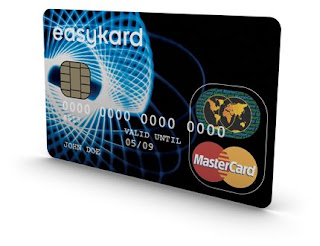 Credit cards have nowadays insinuated themselves into all corners of our lives, and it is rare for an adult these days to not carry at least one card. As well as being used in the traditional manner to buy goods or services in person, they are also now used online, over the telephone, for writing checks, and even for withdrawing money from cash machines. People use them in all sorts of ways - as a means of borrowing, as a convenient payment method, and even for earning money through cashback or reward schemes.
Credit cards have nowadays insinuated themselves into all corners of our lives, and it is rare for an adult these days to not carry at least one card. As well as being used in the traditional manner to buy goods or services in person, they are also now used online, over the telephone, for writing checks, and even for withdrawing money from cash machines. People use them in all sorts of ways - as a means of borrowing, as a convenient payment method, and even for earning money through cashback or reward schemes.Despite their ubiquity in modern life, credit cards have a fairly short history, with the first general purpose credit card being introduced less than fifty years ago. In this article we'll look at the origins of credit cards, and then at how they've developed over the years with the emphasis on the United Kingdom market.
The very first credit card was launched by Diners Club in 1951, and was limited to use in twenty seven New York restaurants. It wasn't a huge success initially, with only 200 cards being issued. The real story of credit cards began in 1958 with the introduction of two major new products. The first was the American Express charge card, which boasted over a million users within five years of it being launched.
The other innovation was the first example of what we now recognize as a credit card: the Bank Americard, a general purpose card developed by Joseph Williams while working at the Bank of America. Over time, this card was to develop into the Visa company that we know today. Eight years after the introduction of this card, fourteen U.S. banks formed an alliance to launch a rival to the Bank Americard, named Interlink, which was to evolve into the Mastercard payment processor by 1979.
The first UK general card was launched by Barclays Bank in 1967, and their Barclaycard is still one of the most popular and widespread cards forty years later. In 1972, four other UK banks joined forces to launch the Access card in competition with Barclays, and for the next decade or so this remained the status quo.
It was during the 1980s that the credit card industry began consolidating behind the two big processors that had evolved into their current form by this time, Visa and Mastercard. Banks dropped their own processing facilities, and began to issue cards that could be used at any outlet that supported these two main payment processors. It was this move that led to the great expansion in card use, as they could now be easily used almost anywhere in the world.
The next major change to the industry was the revolutionizing technology of the internet, allowing purely online cards such as Egg in the UK to offer attractive benefits to the cardholder at low cost to the issuers. Competition between lenders quickly heated up, and features such as balance transfer offers began to appear.
Balance transfer deals allowed cardholders to move their debt from card to card and avoid paying any interest on it almost indefinitely, or so it seemed. Unfortunately, this ruse of 'credit card surfing' couldn't last as it was costing the credit industry billions every year, and so a balance transfer fee was imposed which made it much less attractive to cardholders.
The last major change in the credit card industry has been the introduction of Chip and PIN technology which has cut card fraud substantially by requiring payments to be approved via entering a code number rather than relying on a signature. The technology began to be rolled out in the UK in 2004, and is now fully in use across the country.
What's next for credit cards? Only the issuers know, but with record levels of debt many people are reluctant to apply for new cards, and so we're likely to see more attractive features becoming available to new applicants as credit companies compete for the shrinking amount of business available.



